|
A Collaborative Project in Telehealth, Environment, and Telemicrofinance:
An Experiment in
Integrative Development in the Networked Cluster of High Altitude Himalayan Villages |
| |
We all face challenges in the balance between economic development, environmental protection and public health. Thus, development is meaningful and can be sustained when different components of it work in an interactive and integrated fashion. Increasingly, information communication technology has become an important tool in integrating all of these elements. This collaborative initiative envisions taking various knowledge expertise and applying it to a cluster of villages in the Himalayas.
We have several clusters under consideration including one in the Nangi area. Similar IT-based clusters of villages in the Himalayas can be used for expansion of such ideas that blend telehealth, environmental research and education, and the microeconomic development through telelending. |
|
| Objectives
» Create a partnership between the counterparts in Nepal (e.g., Medical Schools) and the UNM's Telehealth Center to enhance the understanding of telehealth technology, management, and general implementation and apply it to the area in and around the target cluster of villages, and replicate this experience in other parts of the country.
» Create a partnership with the academic institutes (e.g., graduate programs in policy research, development, and the environment) in Nepal and help develop and implement school curriculum
to collect and analyse the environmental data (forest, vegetation, river, stream, pollution, hydrology, insects) in the surrounding eco-system and share it internationally with other similar programs in places like Albuquerque, New Mexico (BEMP, University of New Mexico; see below) and Equador. Also, help publish and disseminate monitoring reports and data through NSC's electronic portals (journals and newsletter).
» Promote Kiva's telemicrofinancing in and around the cluster of villages to fund small businesses and encourage investments, whenever possible, in skill trainings and products that are pro-health and environmentally friendly (e.g., green investment). Also, encourage diaspora to provide tele-loans for micro businesses in and around the target sites.
» Working through the collaborating academic institutes in Nepal, promote the cluster of villages and school areas for internships and field research for UNM students (e.g., economics department, water resources program, medical programs).
» Share this experience through seminars and symposiums, and emulate this experience in other parts of the country. |
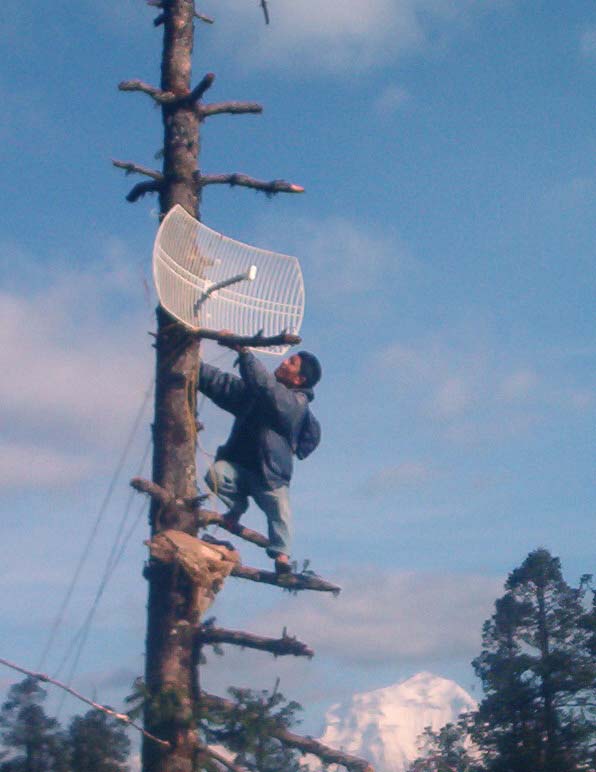 |
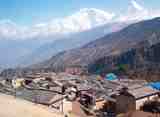
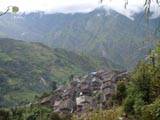 |
| |
Target Site: Nangi Village Cluster
|
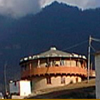 |
Nangi Village Cluster, Nepal |
Nangi village is located in western Nepal on the Southern flank of the Annapurna and Dhaulagiri ranges of the Himalayas. Dhaulagiri I (26,795 ft) and Annapurna I (26,545 ft) are the seventh and the tenth highest peaks of the world. The Nangi village’s initiative and various programs provide an opportunity for international collaborators to offer their skills to promote sustainable development in Nangi while learning about village life in the beautiful mid-western hills of Nepal. The wireless network in the surrounding villages provides us with an excellent opportunity to develop telemedicine, telemicrofinancing, and other educational and research activities in areas such as high altitude enviromental monitoring, micro hydro, and sustainable micro enterprise.
Nangi school and its mentor Mr. Mahabir Pun in the western Nepal near Pokhara, a tourist hub popular for Annapurna trekking circuit, have created a network of several villages using the wireless Wi-Fi technology. Surrounded by beautiful forests, valleys, and mountains, these clusters of villages (more photos) have provided us with an opportunity to bring together various academic and community outreach programs and expertise to enhance our klnowledge sharing efforts.
|
| |
Collaborating Partners and Participants |
 |
Nepal Study Center, Department of Economics, University of New Mexico |
Nepal Study Center at the University of New Mexico is dedicated in fostering knowledge sharing through the mutual understanding and collaborative efforts among the scholars of the developing and the developed worlds. The network of these scholars and its various academic activities form a platform to facilitate such exchanges.
|
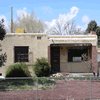 |
Center for Telehealth, University of New Mexico |
The Center for Telehealth at UNM has been in existence since 1995.
As New Mexico is a large rural state, it has gained considerable experience in Telemedicine with many lessons learned. New Mexico is
also a poor state and, in many ways, more like a developing country with limited resources requiring a great deal of creativity in developing our Telehealth network. This type of initiative could be translated to programs in Nepal, especially in a rugged and difficult terrains.
|
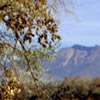 |
Bosque Environmental Monitoring Program (BEMP) |
BEMP conducts a long-term ecological monitoring project that gathers and shares vital information on the ecology of the Rio Grande (River) Bosque in New Mexico. Its component includes community outreach program that raises awareness and understanding of the Rio Grande Bosque. BEMP can offer technical advice on implementing this program in the Himalayas.
|
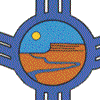 |
Water Resources Program, University of New Mexico |
The Water Resources Program (WRP) offers the Master of Water Resources (MWR) degree, an interdisciplinary professional degree designed to prepare students for careers in water resources. The MWR degree is designed to provide its students a firm grounding in water resources that is applicable to any region. The mission of the MWR degree is to expand and deepen students' knowledge of their primary disciplines and, at the same time, provide them with an integrated perspective on water in nature and society, improve their capacity to think carefully and comprehensively, and develop their technical and communications skills. Its field studies experience in the Latin American countries will be valuable for a country like Nepal.
|
 |
School of Environmental Management & Sustainable Development, Kathmandu, Nepal |
Affiliated with the Pokhara University of Nepal, 'School of Environmental Management and Sustainable Development (SchEMS)'offers Bachalors and Masters degrees in Environmental Management, and at the same time, conducts research and development works in environment and related fields. SchEMS has now 200 students and 45 multidisciplinary faculties. The school is interested to join in this collabotary endeavors and help enhance the international cross-cultural understanding and exchanges as a part of broad based families. Being from a country of 6000 rivers and riverlets and an amazing ecological diversity, we have much to offer and share.
|
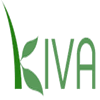 |
Kiva: People2People
Telemicrofinancing |
Pioneers like the Grameen didn't bring people to a bank, they brought a bank to the people. This simple yet most powerful reorientation empowered millions of poor by making them entrepreneurs by providing loans without requiring any collateral. Kiva pushed that idea one step further by creating a web-based global village of lenders and aspiring entrepreneurs. Microfinance institutions around the world post up profiles of qualified local entrepreneurs online on Kiva's website (Direct link to kiva organization: www.kiva.org). Lenders can then browse and choose an ntrepreneur they wish to fund. Kiva aggregates loan capital from individual lenders and transfers it to MFI partners to disburse and administer. As loan repayments are made by the entrepreneur, the MFI remits funds back to Kiva. Once the loan is fully repaid, Kiva lenders can withdraw their principal or re-loan it to another entrepreneur (source: wkpd.). Kiva’s People2People microlending program is most suitable for a rugged country like Nepal.
|
|
|
 |
|
